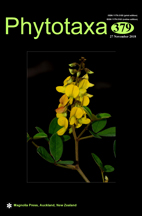Abstract
During fungal diversity studies on ascomycetes from karst landforms in southwest China, two taxa were collected and morphologically identified as Lophiotrema species based on their immersed ascomata, crest-like ostioles, cylindrical, short pedicellate asci and fusiform ascospores. Multi-gene phylogenetic analyses based on a combined LSU-TEF1-α-SSU-ITS-RPB2 sequence data also confirmed their phylogenetic placement within the family Lophiotremataceae, where they clustered with reported Lophiotrema species with strong statistical support. Lophiotrema hydei sp. nov. is introduced and the species forms a distinct lineage which is sister to L. neohysterioides. Morphologically, Lophiotrema hydei differs from L. neohysterioides by its unique appearance of ascomata and different ascospore ornamentation. Another species is identified as L. neohysterioides based on morphological characteristics and phylogenetic data, and it is reported as the new record from China.

